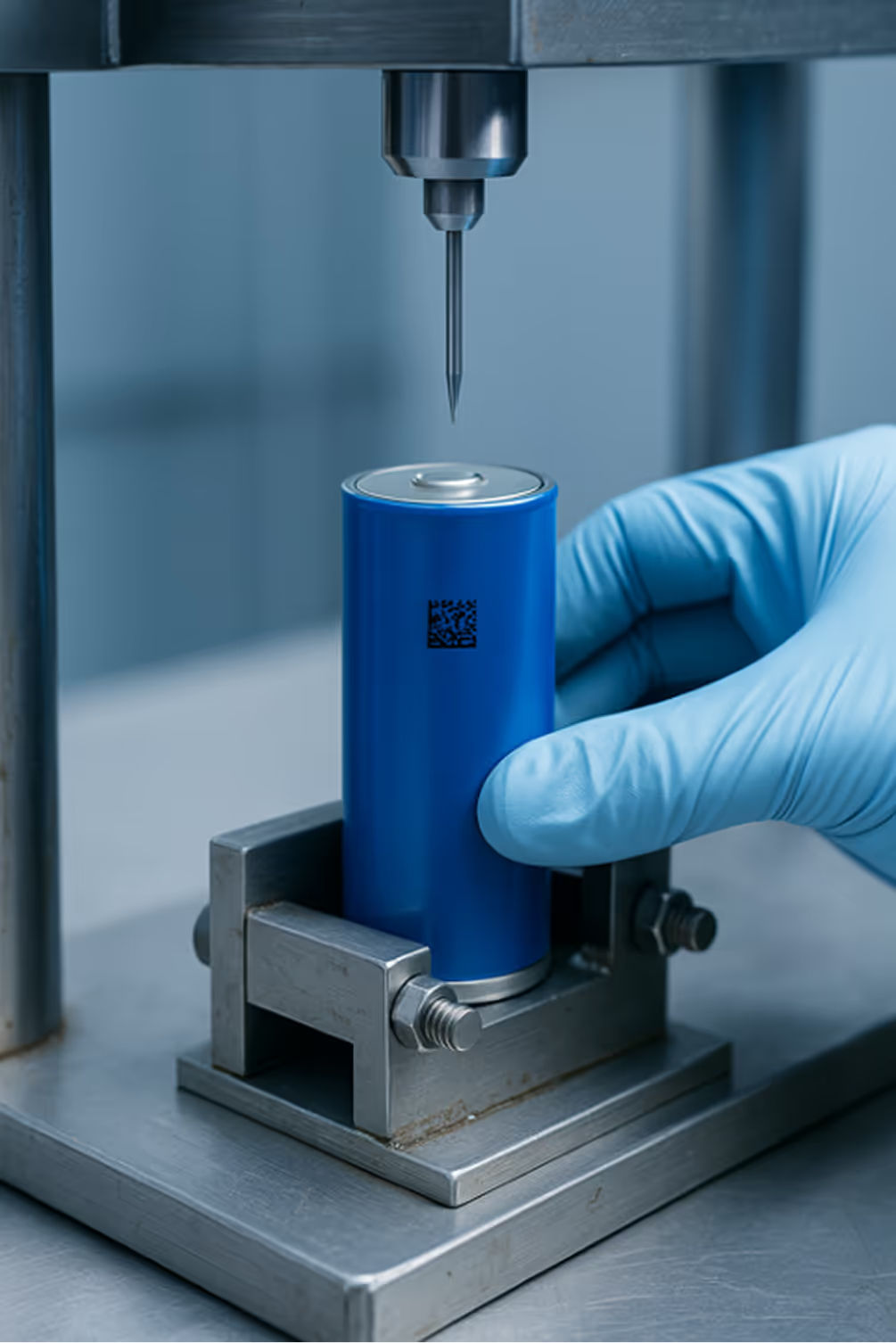UN 38.3
UN 38.3 is a United Nations standard that specifies rigorous testing requirements for lithium metal and lithium-ion batteries to ensure their safety during transportation, mitigating risks of fire, explosion, or leakage.
UN 38.3, formally known as the United Nations Manual of Tests and Criteria, Part III, Section 38.3, is a critical international standard that defines the testing protocols for lithium batteries to prevent hazards during transport, making it indispensable for professionals in the battery industry who must navigate complex regulatory landscapes to ensure product safety and market access.
Understanding UN 38.3 and Its Significance
For battery manufacturers, component suppliers, and OEMs, UN 38.3 is not merely a compliance checkbox but a foundational element of risk management and quality assurance. This standard addresses the inherent risks of lithium batteries, such as thermal runaway, by mandating a series of tests that simulate extreme conditions encountered during shipping and handling. Its adoption is driven by global regulatory bodies, including the International Civil Aviation Organization (ICAO) and the International Maritime Organization (IMO), ensuring that batteries meet safety benchmarks before they are transported by air, sea, or land. Professionals must recognize that non-compliance can lead to severe consequences, including supply chain disruptions, legal liabilities, and reputational damage, underscoring the need for a proactive approach to testing and documentation.
Scope and Applicability
The scope of UN 38.3 encompasses all types of lithium metal and lithium-ion batteries, whether standalone or integrated into devices, and applies to both new and prototype batteries. It is particularly relevant for industries like electric vehicles (EVs), consumer electronics, and energy storage systems, where battery safety is paramount. Understanding the applicability helps professionals determine when testing is required—for instance, during design validation, production batches, or when modifying battery chemistries—ensuring that all potential hazards are assessed comprehensively.
Key Testing Procedures Under UN 38.3
The testing framework under UN 38.3 consists of eight distinct tests, each designed to evaluate specific aspects of battery safety under simulated transport conditions. These tests are sequential and must be conducted on a representative sample of batteries to validate their integrity. For battery engineers and quality assurance teams, mastering these procedures is essential to identifying design flaws early, reducing the risk of field failures, and accelerating time-to-market. The tests include altitude simulation, thermal cycling, vibration, shock, external short circuit, impact, overcharge, and forced discharge, each targeting potential failure modes that could lead to safety incidents during logistics operations.
Detailed Breakdown of Tests
Starting with Test T.1 (Altitude Simulation), this evaluates battery performance under low-pressure conditions equivalent to 15,000 meters altitude, mimicking air transport scenarios. Test T.2 (Thermal Test) subjects batteries to extreme temperature cycles between -40°C and +75°C, assessing thermal stability and material integrity. Test T.3 (Vibration) simulates the vibrations experienced during transport, while Test T.4 (Shock) tests mechanical robustness against sudden impacts. Test T.5 (External Short Circuit) checks for short-circuit tolerance, a common cause of thermal runaway. Test T.6 (Impact) involves a crush test for larger batteries, and Tests T.7 (Overcharge) and T.8 (Forced Discharge) evaluate electrical abuse scenarios. Professionals must ensure that batteries pass all tests without leakage, venting, fire, explosion, or disassembly, as any failure necessitates redesign or additional safeguards.
Documentation and Record-Keeping
Beyond testing, UN 38.3 requires meticulous documentation, including test reports, safety data sheets, and declarations of conformity. This documentation serves as evidence for regulatory approvals and is often scrutinized during audits or incident investigations. For battery manufacturers, maintaining accurate records not only facilitates compliance but also supports traceability and continuous improvement efforts. Key documents include the test summary, which outlines the results of each test, and the packaging instructions, which ensure that batteries are transported in approved containers that prevent short circuits or damage.
Compliance and Certification Process
Achieving UN 38.3 compliance involves a structured process that begins with risk assessment and ends with certification, requiring collaboration across R&D, production, and logistics teams. Professionals must first identify the applicable battery type and select accredited testing laboratories to conduct the tests. Once testing is complete, the results are compiled into a compliance dossier, which is submitted to relevant authorities for approval. This process can be iterative, especially if failures occur, necessitating design modifications and retesting. For global markets, compliance must align with regional variations, such as those in the EU, US, or Asia, adding layers of complexity that demand expert navigation.
Common Challenges and Solutions
Common challenges in UN 38.3 compliance include managing test costs, interpreting ambiguous test criteria, and addressing failures related to battery chemistry or design. For instance, high-energy-density batteries in EVs may struggle with overcharge tests, requiring enhanced battery management systems (BMS) or protective circuits. Solutions involve early integration of testing into the product development lifecycle, leveraging simulation tools to predict failures, and partnering with experienced consultants to streamline the certification process. By adopting a risk-based approach, professionals can mitigate delays and ensure that batteries meet the highest safety standards.
Industry Implications and Best Practices
The adoption of UN 38.3 has profound implications for the battery industry, driving innovations in safety technologies and supply chain management. For OEMs and EV producers, compliance is a competitive differentiator that builds customer trust and facilitates international trade. Best practices include conducting pre-compliance testing during prototyping, training staff on regulatory updates, and implementing robust quality control systems. Additionally, staying informed about evolving standards, such as amendments to UN 38.3, is crucial for maintaining compliance in a dynamic regulatory environment. Professionals should also consider sustainability aspects, as safe battery transport supports circular economy initiatives by reducing waste and environmental risks.
Future Trends and Evolutions
Looking ahead, UN 38.3 is expected to evolve in response to advancements in battery technologies, such as solid-state batteries or fast-charging systems, which may introduce new safety challenges. Industry stakeholders should anticipate updates that address emerging risks, like those from recycled or second-life batteries, and participate in standard-setting organizations to influence future requirements. Proactive engagement ensures that compliance strategies remain agile and aligned with global safety goals.
In conclusion, UN 38.3 is a cornerstone of battery safety that empowers professionals to mitigate transport risks through rigorous testing and documentation. Its importance extends beyond regulatory compliance to encompass brand reputation, supply chain resilience, and innovation leadership. By embedding UN 38.3 principles into their operations, battery industry players can enhance product reliability and contribute to a safer, more sustainable energy future.
PEM Motion, as an international engineering and consulting partner for battery technology, supports battery manufacturers, component suppliers, OEMs, and EV producers in navigating the complexities of UN 38.3. With key expertise in Battery Testing & Compliance, BMS Solutions, Training, and Operations Support, PEM Motion assists clients in conducting accurate testing procedures, managing documentation, and achieving seamless compliance with international standards, ensuring that their products meet safety requirements while optimizing performance and time-to-market.
Our Focus
What we do

BATTERY Compliance
We ensure your batteries meet all compliance standards for safety and performance.

OPERATIONS & TRAINING
We empower your team with comprehensive training and operational consultation for battery technology and energy storage solutions.

BMS SOLUTIONS
We offer a wide range of Li-Ion battery solutions and Battery Management Systems for various industries.












